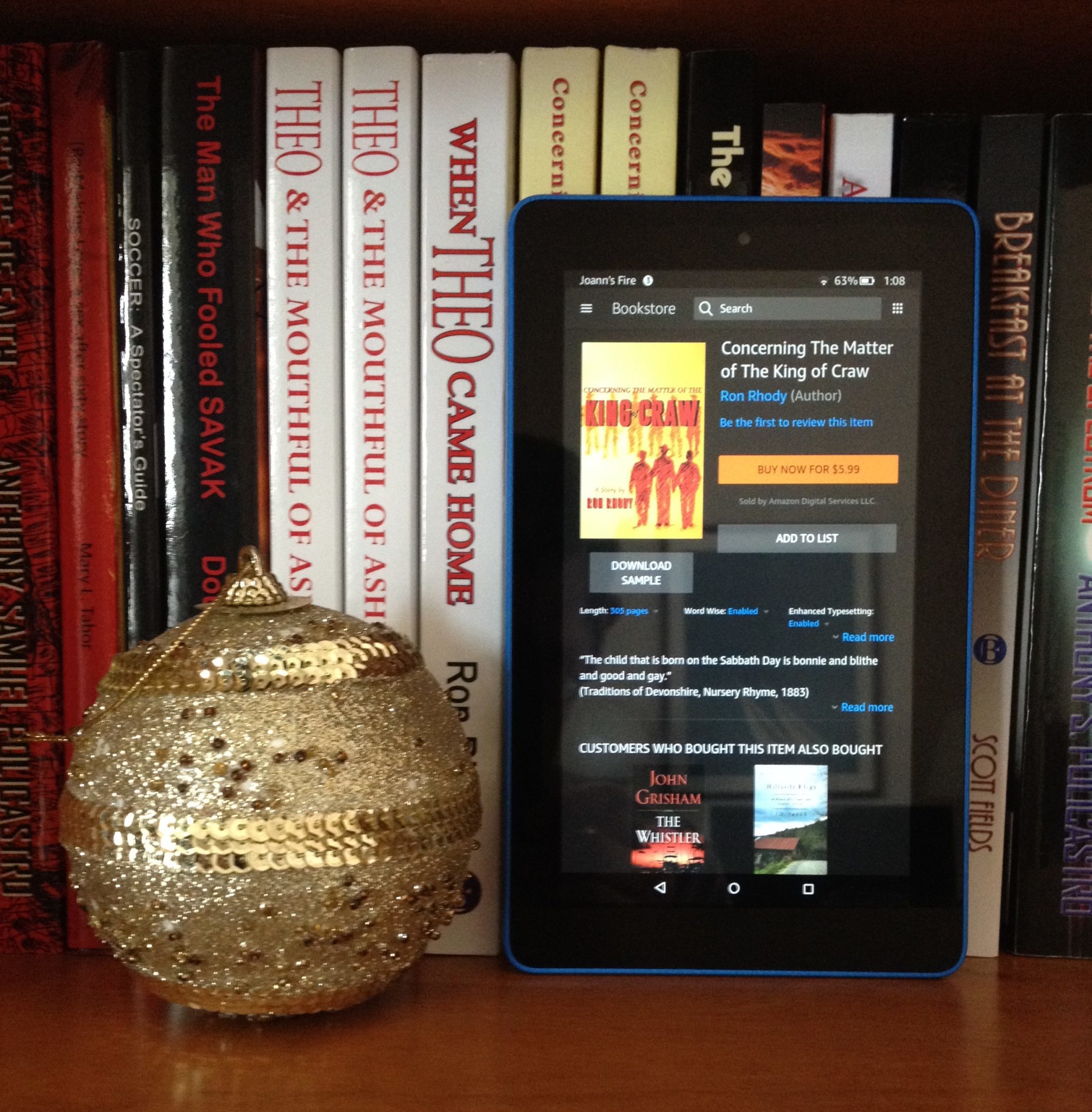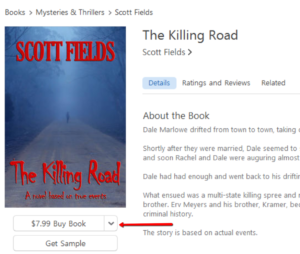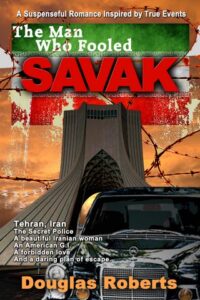


![]() Now you can give your favorite book worm an ebook this holiday season. And with ebook reading apps for any smart phone, tablet or PC your recipient doesn’t need to buy a specific ebook reader.
Now you can give your favorite book worm an ebook this holiday season. And with ebook reading apps for any smart phone, tablet or PC your recipient doesn’t need to buy a specific ebook reader.
For the Kindle or app
Simply click on the “Give as a Gift” button near the bottom of the check out box and Amazon will send an email to your recipient on how to download the book.
For the Nook or app
 The process is the same as the Kindle. Just click on the “Buy as a Gift” button at the bottom of ht check out box.
The process is the same as the Kindle. Just click on the “Buy as a Gift” button at the bottom of ht check out box.
For Mac iBooks app
Download the iBooks app on your Mac or PC to enter the store or select books in iTunes. Choose your book and then select the drop down menu on the Buy Book button and choose the first item, “Gift this Book.”
For Google Play Books

If you purchase a book from the Google Play Store, you will have to buy a digital gift card and send that to your recipient. Purchased books from Google can be downloaded to any device for reading. For more information on how to download books to other devices, see Google’s Play Books help page.

It’s nice to say you are a green company, but doing it effectively is another story.
With digital printing we don’t have thousands of books sitting in warehouses waiting to be sold – spent resources that may or may not be purchased and read.
We print books only when an order is received.
The majority of our book sales (85%) are electronic as manufacturers of ereaders have opened their walled gardens allowing their books to be read on any device, any platform, anywhere, anytime.
Think printed books will go away? No way. Did movie theaters close when home theater systems became mainstream?
The Association of American Publishers reported that the annual growth rate for eBook sales fell during 2012, to about 34% – a sharp decline from the triple-digit growth of the preceding four years.
But that doesn’t mean ebooks are going away. A recent Pew Research Center survey showed that adults who have read an e-book increased from 16% to 23% in the past year. It also revealed that 89% of regular book readers said that they had read at least one printed book in the last year.
Ebooks are merely another channel, another technology to promote, sell and enjoy books. It compliments printed books. Printed books won’t go away – there will just be fewer printed.
Fewer printed books is not good for the big six publishers, but it won’t bankrupt them – just lower their sales volume and profit margins.
That’s why they won’t fully embrace ebooks and why they charge artificially high prices for their ebooks close to the full price of their printed books.
They want to revive the same high profit margins they enjoyed with print books for so many decades.
But they will never convince their customers or the general public that ebooks cost as much as print books to edit, process and distribute.
Ebooks are a disruptive technology and like all disruptive technologies is condemned, rejected and deemed catastrophic for society by those who stand to lose.
The market will determine the accepted price of ebooks, not the publishers and there is nothing they can do to stop it. The tsunami has already hit land.
[repostus thumb=2922690 hash=e0b85a26c998bc2fe2426dc95b1ff658 title=Review%3A%20Watch%20the%20video host=NewsLook short=1nOkg]
“I was completely surprized…especially to know only now how this quiet person had gone against all odds, exposed himself to so much danger and took the risk to do something that he believed in and acted upon to bring resolve. I must say that with all that he was going through, he did not show it.” – Heidi Efteckhar Silver, a character in the novel, The Man Who Fooled SAVAK.
 Doug Roberts exciting novel, The Man Who Fooled SAVAK, came into being with the help of his long-time friend and co-worker, Heidi Efteckhar Silver, who helped him remember a lot of the details of his daring escape from Iran forty years ago. Mrs. Silver, one of the major characters in the book, played an integral part in helping Doug smuggle his then fiance and her mother out of Iran when the secret police, SAVAK, would not allow them to leave. SAVAK watched the family closely because they wanted the family to lead them to the husband and father, who was a human rights activist and lawyer who had escaped a decade earlier. Here is Mrs. Silver’s thoughts on The Man Who Fooled SAVAK.
Doug Roberts exciting novel, The Man Who Fooled SAVAK, came into being with the help of his long-time friend and co-worker, Heidi Efteckhar Silver, who helped him remember a lot of the details of his daring escape from Iran forty years ago. Mrs. Silver, one of the major characters in the book, played an integral part in helping Doug smuggle his then fiance and her mother out of Iran when the secret police, SAVAK, would not allow them to leave. SAVAK watched the family closely because they wanted the family to lead them to the husband and father, who was a human rights activist and lawyer who had escaped a decade earlier. Here is Mrs. Silver’s thoughts on The Man Who Fooled SAVAK.
Q. Not many novels use the names of real people but Doug Roberts in his book The Man Who Fooled SAVAK, portrays you as being a friend and co-worker in the Administrative Services office in the U.S. military advisory unit to Iran, ARMISH/MAAG. I find that rather remarkable.
A. Since Doug’s story is based on a real life experience, it’s great that he has used people’s real names in his story. Most things mentioned in his book did happen. Technology, such as Facebook, also played a big role in Doug being able to find some of the people he had worked with in ARMISH/MAAG, such as myself, and hear more stories from them that made his book more authentic and I am glad I was part of it.
Q. Did you know why Doug was sent to Administrative Services before leaving Iran?
A. I had absolutely no idea. I must say that Captain Seaman and Del, with whom I worked closely had great respect for Doug and kept his ordeal, which was extremely serious, strictly confidential.
Q. What was it like working with Doug.
A. I found him to be a pleasant fellow, who was very easy to work and get along with. I was completely surprised when I read “The Man Who Fooled Savak,” especially to know only now how this quiet person had gone against all odds, exposed himself to so much danger and took the risk to do something that he believed in and acted upon to bring resolve. I must say that with all that he was going through, he did not show it. He exercised great care in keeping the situation under wrap. This also speaks of Doug’s strong and determined character which is well played out in the book.
Q. What did you think of the book.
A. I thought the book was amazing. When I was reading the book, events played out in front of my eyes. His description of the culture, food, the Iranian way of life and their hospitality is so authentic that it also took my life for a review during those years in Iran. The amazing thing about this book is that Doug, as an American GI, who was stationed in Iran for a brief period of time witnessed the signs of the revolution which came about only a few years later.
Q. Would you recommend this book to your friends.
A. Absolutely. Especially young adults. My own children, who are now young adults, were very small at the time and knew nothing when we had the Iranian Revolution in 1979. This book is not only intriguing and entertaining, but also has a great historical value. During the 2009 uprising, I found myself explaining to my boys, their friends and even some of my friends how all this had come about. Doug has done a great justice in describing what was going on in Iran during the Shah’s reign which lasted nearly 37 years before he was overthrown during the 1979 Revolution. I think those who read this book today will not only be intrigued by the story, but will also learn about Iran and gain great respect for this ancient country, with rich culture and history whose people are kind, friendly and hospitable, but have suffered much in the hands of politics.
__________________________________________
The Man Who Fooled SAVAK, a suspenseful romance, is available on the Kindle, the NOOK and in other ebook formats from Smashwords.com.
Electronic Edition
eIBSN 978-1-4524-4281-5
435 Pages
Published June 2011
So you wanna get published, right? So you think only a big house can get you anywhere worth getting, right? So, you think you need an agent first thing, right? I thought all these things and have the credentials to prove that I’ve been on a literary journey: English major, Phi Beta Kappa, teacher, professor, MFA degree, literary journal editor, literary prize winner. But no big house and no agent.
Instead, I did what some may think is crazy. I went with a product development company that dabbled in publishing. But my book got out. And I went to work. I have an active public page that is linked to my account, a always under revision as new stuff happens and I write a where I try to post at least once a week.
Today’s post that you are reading would have been this essay. But this site begged for it and it’s theirs. But later you may see this post on my . Go check out this: .
I don’t tweet about my memoir (Re)Making Love: a sex after sixty story much, though some. I don’t blog about my book much, but some: actually, I blogged the book while I lived it—that’s the first crazy-some-say thing I did before the product development company found me—and that accounts for the banner of a blog that deals not with erotica but with literary thought, interviews and essays on writing and books.
Now you’d think a book with this sordid, unconventional history wouldn’t be doing very well, right? And, indeed, I’m not getting rich. But is that what we artists are really about? Okay, a girl could hope but that’s never been the goal: The work will out.
But get this: The small print in the visual of my book on Amazon says, #7 top rated in the Kindle store for Non-Fiction, Biographies & Memoirs, Arts &literature, Authors. The week before it was #5 behind The Diary of Anne Frank and Steven King’s On Writing.
And guess what: The book party at Upstairs on 7th (aka: “How to buy a dress and get a book party”) resulted in the promise of another book party by one of the women who came. Then I went to dinner with a banker-friend I know and told him what happened. He called his wife and is planning another book party in another dress shop and he’ll be providing the wine.
Is there a moral? Ain’t no good here at morals. But I will say this: If you put your heart and soul into your book and you’ve edited it like crazy with a cool eye, had others eyeball it and critique it, then find a reputable publisher and work—yes that means you—to sell one book at a time. Because like the memoir I wrote, it’s all personal.
PS: Another piece of good news: A new and much more experienced indie publisher has taken my memoir. Be sure to check out the second edition (more edits and a prologue) now from .
(Re)MAKING LOVE: a sex after sixty story, second edition, is available on , the , Barnes & Noble, the Nook, iBook, Sony ereader, the and in other electronic formats from .
When I heard this sad story on NPR radio this morning it moved me so much and reminded me of Doug Roberts novel, The Man Who Fooled SAVAK, a suspenseful love story based on true events. This is the kind of repression that still pervades a lot of the Middle East today as it did forty years ago when Mr. Roberts staged the successful escape of his fiancé and her mother from a repressive and threatening Iran.
In January of this year in Pakistan, the governor of Punjab province, Salmaan Taseer, who was an outspoken defender of civil rights, was gunned down for criticizing the hardness of Islamic law. He was merely sticking up for a Christian woman who was accused of blaspheming Islam. Her punishment: death.
His daughter, Shehrbano Taseer, is a journalist in Pakistan, and she talks to Steve Inskeep, host of NRP Radio’s Morning Edition, about her father’s legacy and her own fight against extremism.
Here is part of that interview:
“INSKEEP: And it was not that your father committed this alleged act of blasphemy, but merely spoke up for the rights of someone who was accused of blasphemy and asked for her to be accorded mercy. This is what many clerics described as itself being blasphemous.
Ms. TASEER: Yeah, because my father had criticized the law. He had criticized the misuse of the law.
INSKEEP: Did anyone speak up for your father after his murder?
Ms. TASEER: There were three people who believed that this law was being misused and that this was an unfair  allegation of blasphemy. There was my father. There was our federal minister for minorities, Shahbaz Bhatti, and there was Syeda Imam, who is a parliamentarian. And she had tabled a bill in the national assembly trying to water down this law and stop the misuse. And two out of three of these people are now dead. Shahbaz Bhatti, our federal minister for minorities, was gunned down outside his mother’s home two months after my father was shot dead.”
allegation of blasphemy. There was my father. There was our federal minister for minorities, Shahbaz Bhatti, and there was Syeda Imam, who is a parliamentarian. And she had tabled a bill in the national assembly trying to water down this law and stop the misuse. And two out of three of these people are now dead. Shahbaz Bhatti, our federal minister for minorities, was gunned down outside his mother’s home two months after my father was shot dead.”
You can read the rest of this moving interview or listen to it on the NPR site. And if you want to read more about a similar story with a much different outcome, download a copy of The Man Who Fooled SAVAK, available on the Kindle, Barnes and Noble NOOK, Apple iBooks and in various ereader formats from Smashwords.
With all the buzz around the iPad, you don’t need to be psychic to predict that Amazon would sooner or later develop a comparable color screen tablet device.

Well the sooner is here. Amazon is now accepting iPads and other devices as trade-ins for their new touch-screen color tablet at http://amzn.to/jbdaq2
Steve Windwalker reported in the blog Kindle Nation Daily that Amazon is well on the way to preparing to launch the device sometime this summer. Here’s what he wrote about the trade-in program.
“It extended its relatively unknown Buyback program, previously associated mostly with textbooks, movies, and video games, to include a wide range of electronics products including the iPad, the iPhone, the Samsung Galaxy, the Motorola Xoom, and all kinds of other devices that might — if you could trade them in for a decent sum — prepare the way for you to buy a Kindle tablet, both in terms of the need to replace functionality and the financial wherewithal to make the purchase.”
They actually want you to own their new Kindle Color version knowing full well that owners of iPads and other color tablet like devices wouldn’t buy the new Kindle after shelling out $500+ for their current iPad or similar device.
It’s another marketing first for Amazon to grab the lion’s share of the spawning tablet market, and I’m sure it won’t be their last.
You can also read Amazon’s press release about the trade-in program on Steve’s post on Kindle Nation Daily.
Congrats to Amanda Hocking for using a traditional publisher to further her writing career. She did the right thing seeking out a traditional publisher and the reason is clear – she wants to be a writer – not a book marketer, editor, designer and distributor.
 This is not a new trend – it has been happening for years.
This is not a new trend – it has been happening for years.
The caveat here is her content. She has the content that sells – when she writes, it sells. She can afford to give away a large piece of her royalties so she can spend more time writing.
So should every self-published author seek out traditional publishers for their work. Maybe, yes and maybe, no. Some authors like JA Konrath took the reverse course – he went from traditional publishers to self-publishing because he could get a bigger piece of the publishing pie, especially on his traditionally-published books that went out of print. Even luminary Stephen King experimented with self-publishing a few years back.
A new trend is emerging as traditional publishers go digital. Currently, a self-published author could get their work in front of more people as an eBook than a printed book. This is still true, but as more and more traditional publishers go digital, they can offer both – significant eBook exposure as well as print book distribution. They will take a larger piece of the pie, but if your work is selling well, it is worth going with a traditional publisher.
Here’s the Amanda Hocking story from The New York Times.
If any writer proved that modern self-publishing could be a pretty sweet deal, it was Amanda Hocking.
Amanda Hocking, who has self-published nine books.
In the past year Ms. Hocking, a 26-year-old from Minnesota, became an indie heroine in the literary world for publishing nine books that sold a total of more than one million copies, nearly all of them in e-book form, earning almost $2 million for her efforts.
But for Ms. Hocking, self-publishing has had its limits. On Thursday she announced that she had sold a four-book series to St. Martin’s Press, ending a frenzied weeklong auction that involved nearly every major publisher in the business, including Random House, Simon & Schuster and HarperCollins.
St. Martin’s, part of Macmillan, paid more than $2 million for the world English rights to the “Watersong” series, Ms. Hocking’s latest books in the young-adult paranormal genre. >more
We just received this newsletter from a new site called kindlelendingclub.com launched by Amazon last December.
If you have a Kindle or any of the Kindle reading apps (Kindle for PC, Kindle for iPhone, Kindle for Blackberry, etc.) you can go to the site, sign up and borrow any Kindle book that has lending enabled.
The book will then be loaned to you for 14 days and then automatically transferred back to the original owner.
What we found interesting is the lending trends reported by the site in the following newsletter and the 25 most wanted books.
In light of the demographics (females between 35 and 55) we would have thought romance novels would be the leading lending genre. However, here’s what they reported.
The 25 Most Wanted
Literary fiction, the paranormal, sci fi, crime fiction, thrillers and even a memoir about a comedian’s one-night stands; it seems like KindleLendingClub.com readers (who tend to be female and between 35 and 55 years of age) are borrowing anything but traditional romance in the lead up to Valentine’s Day 2011.
While Amanda Hocking’s vampire and paranormal romances for young adults remain perennially popular, only two of th e top 25 most requested books are traditional romance novels: A Season to be Sinful, by Jo Goodman, and Terry Spear’s An Accidental Highland Hero.
e top 25 most requested books are traditional romance novels: A Season to be Sinful, by Jo Goodman, and Terry Spear’s An Accidental Highland Hero.
(Another interesting trend we saw last week as well? Eight of the 25 titles fall under the umbrella of young adult fiction.)
KindleLendingClub.com Most Wanted – Week of January 30, 2011:
1. The Hangman’s Daughter, by Oliver Pötzsch
2. Water for Elephants: A Novel, by Sara Gruen
3. The Hunger Games, by Suzanne Collins
4. Switched (Trylle Trilogy, #1), by Amanda Hocking
5. Wicked Appetite, by Janet Evanovich
6. Mockingjay (The Final Book of The Hunger Games), by Suzanne Collins
7. Catching Fire (The Second Book of the Hunger Games), by Suzanne Collins
8. Heart of the Matter, by Emily Giffin
9. My Horizontal Life, by Chelsea Handler
10. My Blood Approves, by Amanda Hocking
11. The Lover’s Dictionary: A Novel, by David Levithan
12. Freedom: A Novel (Oprah’s Book Club), by Jonathan Franzen
13. The Templar Concordat, by Terrence O’Brien
14. Ender’s Game, by Orson Scott Card
15. We Interrupt This Date, by L.C. Evans
16. A Season To Be Sinful, by Jo Goodman
17. Sizzling Sixteen, by Janet Evanovich
18. Favorite, by Karen McQuestion
19. The Boy Who Came Back from Heaven, by Kevin Malarkey
20. Ascend (Trylle Trilogy, #3), by Amanda Hocking
21. Ender in Exile, by Orson Scott Card
22. Crossing Oceans, by Gina Holmes
23. Shiver, by Maggie Stiefvater
24. Firefly Lane, by Kristin Hannah
25. The Accidental Highland Hero, by Terry Spear